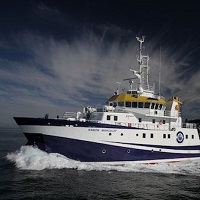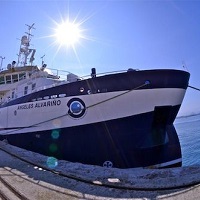Keyword
Seismic refraction
9 record(s)
Type of resources
Categories
Topics
INSPIRE themes
Keywords
Contact for the resource
Provided by
Years
Formats
Status
-

GEOLOGY PROSPECTION OF THE SEA FLOOR. PERFORM HIDROGRAPHIC SURVEYS, CONDUCT OF GEOPHYSICAL EXPLORER, IMAGING DEEP SEA, CHARTING MAPPED FISHING AREA OF DE ZEE SPANISH WATERS.
-

GEOLOGY PROSPECTION OF THE SEA FLOOR
-

GEOLOGY PROSPECTION OF THE SEA FLOOR. PERFORM HIDROGRAPHIC SURVEYS, CONDUCT OF GEOPHYSICAL EXPLORER, IMAGING DEEP SEA, CHARTING MAPPED FISHING AREA OF DE ZEE SPANISH WATERS.
-

GEOLOGY PROSPECTION OF THE SEA FLOOR. PERFORM HIDROGRAPHIC SURVEYS, CONDUCT OF GEOPHYSICAL EXPLORER, IMAGING DEEP SEA, CHARTING MAPPED FISHING AREA OF DE ZEE SPANISH WATERS.
-

GEOLOGY PROSPECTION OF THE SEA FLOOR. PERFORM HIDROGRAPHIC SURVEYS, CONDUCT OF GEOPHYSICAL EXPLORER, IMAGING DEEP SEA, CHARTING MAPPED FISHING AREA OF DE ZEE SPANISH WATERS.
-

GEOLOGY PROSPECTION OF THE SEA FLOOR
-

The main objetive of PLOCAN1304 cruise is twofold. On the one hand implement PLOCAN testing bank area, located in NE coast of Gran Canaria island, and on the other hand, doing seasonal sampling of ESTOC (Estacion de Series Temporales Oceánias de Canarias), which represents PLOCAN node oceanic observatory, located 60 nautical miles north of Gran Canaria island.
-

The main objetive of PLOCAN1310 cruise is twofold. On the one hand implement PLOCAN testing bank area, located in NE coast of Gran Canaria island, and on the other hand, doing seasonal sampling of ESTOC (Estacion de Series Temporales Oceánias de Canarias), which represents PLOCAN node oceanic observatory, located 60 nautical miles north of Gran Canaria island. Hydrological and Geophisical sampling at NER300 area.
-

The marine ecosystem of the island of El Hierro, one of the richest and most sensitive of the spanish region, is experiencing the consequences of the first recorded underwater eruption in the Canary Islands in the last 500 years of volcanological history. The principal objective of VULCANO is to characterize the marine ecosystem from a physical-chemical-biological approach in order to quantify the environmental impact caused by the eruptive process. This main aim splits into five particular objectives: 1) to characterize the ecosystem before and after the eruption process, 2) to study the spatio-temporal variability of physical, chemical and biogeochemical properties, 3) to evaluate the impact of the eruptive process on lower trophic levels and 4) Characterization of the physiographic, morphological and structural changes on the seafloor associeted to submarine eruptions and 5) the data integration in existing databases, SIG implementation and dissemination by viewers. These objectives will be accomplished through the development of a multidisciplinary working plan which includes the realization of 3 oceanographic cruises and satellite observations.
 Catálogo de datos del IEO
Catálogo de datos del IEO